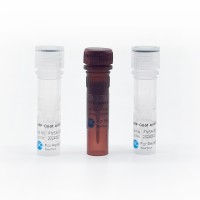Molecular Methods for Detection of Minimal Residual Disease Following Transplantation in Lymphoid and Plasma Cell Disorders
互联网
互联网
相关产品推荐

Hemagglutinin/HA重组蛋白|Recombinant H1N1 (A/California/04/2009) HA-specific B cell probe (His Tag)
¥2570

MLLT3/MLLT3蛋白Recombinant Human Protein AF-9 (MLLT3)重组蛋白ALL1-fused gene from chromosome 9 protein Myeloid/lymphoid or mixed-lineage leukemia translocated to chromosome 3 protein YEATS domain-containing protein 3蛋白
¥5268

Recombinant-Hordeum-vulgare-High-molecular-mass-early-light-inducible-protein-HV58-chloroplasticHigh molecular mass early light-inducible protein HV58, chloroplastic; ELIP
¥10556

磁珠法残留DNA样本前处理试剂盒(瓶装)| Magnetic Residual DNA Sample Preparation Kit
¥500

APC Goat Anti-Mouse IgG (H+L) Antibody(minimal x-reactivity)
¥700
相关问答

